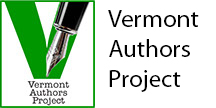You may find it dull to adhere to the conventions of publishing, but they do make life easier for the people buying and selling the books. Having these also shows how serious you are about your book and literally being a pro about the business. You are up against thousands of other publishers and authors. Strive to match the professionalism of the big publishers.
There are important elements that need to be on book covers to show you are a professional. They are:
- BISAC code from here
- ISBN
- Publisher’s indicia/logo (especially on the lower spine)
- Publisher’s name, at least the city/state, and website on the back cover
- Author’s bio: why is this person the one to write the book, if non-fiction, what are their qualifications
- A description/summary/hook to entice the reader to buy the book
The BISAC code tells the bookstore where to shelve the book. It is usually placed in the upper left hand corner of the cover — in a small, but readable font
The ISBN is placed along the bottom of the book — usually in the lower right corner. That would be the first place it would be looked for. Whether or not you include the retail price of the book in the ISBN, or on the cover is becoming questionable, as the price of paper keeps fluctuating almost monthly.
Interior Design and Elements
The interior of the book requires elements in the correct order as well. The best place to find exactly what goes where it The Chicago Manual of Style. This is the very least that is looked for when judging books for awards:
- Title page
- Copyright page
- About the Author in some form
Pricing your book
The traditional publishing convention was to find out how much the book would cost to print a copy, then multiply by 8. For example: if your book costs $2 to print, then the book’s retail cost is $16. Booksellers take, at least, the top 40% of the retail cost — to run their business. Then there are the distributor and wholesaler charges which has been increasing over the years, leaving roughly 25-30% for the publisher for printing, PR, overhead, royalty payments and so on.
If you are going the IngramSpark Print-on-Demand (POD) route—a very good one so you don’t end up with piles of books as coffee tables—there are calculators on their site you can use to calculate what you will receive depending on how your price your book. That also depends on what paper you use, b/w or color interior, size and any other options you choose.
IngramSpark has plenty of education on publishing books, from design to PR.
For an interesting article on book cover design, try this link.
